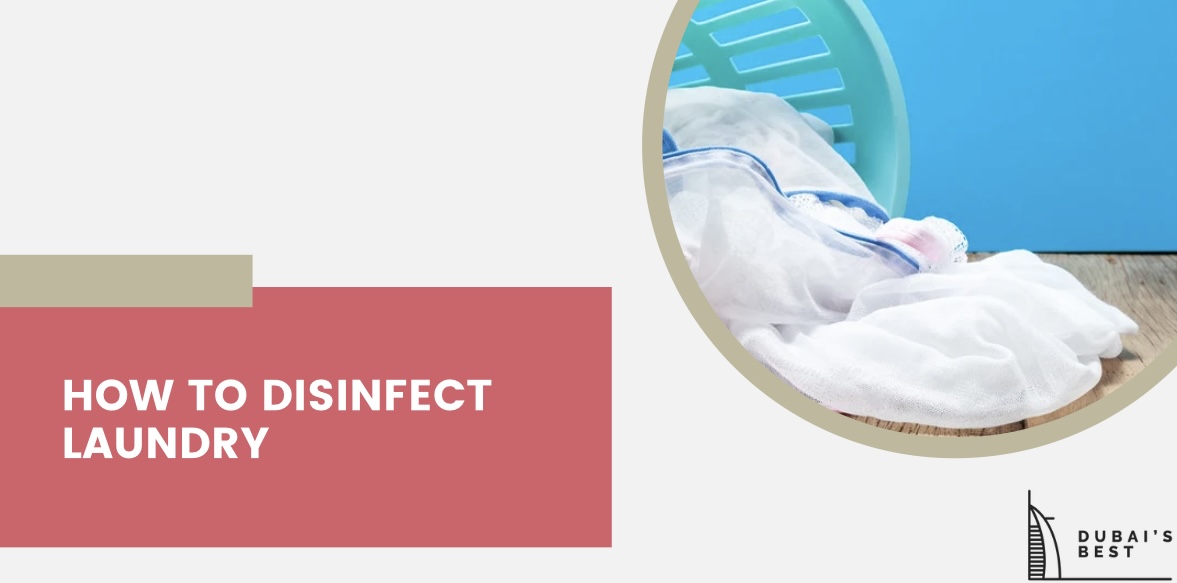How to Disinfect Laundry
Laundry is the most common way for the spread of disease to occur. When a family member has an infection in your home or furnished apartment, it’s essential to take steps to prevent the spread of that infection.
Wrong sanitation habits or a faulty washing machine can both harbor bacteria and disease in your home.
In the following, we’ll be discussing how to disinfect laundry.
Laundry Disinfectants
There are several different ways to disinfect your home laundry, but the method you choose should be safe for fabrics.
You can do a few things to sanitize clothing, bedding, towels, and washcloths in your washing machine or by hand in a sink.
You can even add natural antibacterial chemicals like vinegar and lemon to the wash. These products will kill the germs that cause illness.
Take a look at these three categories of products commonly used to disinfect home laundry and are available at local stores.
Pine Oil Disinfectants
These are effective at killing germs and bacteria in hot or warm water. They can be used on both white and colored fabrics, but if added to the wash too early, they may cause fading or discoloration.
Pine-Sol and Lysol Pine Action are both brands of pine oil disinfectants. They are powerful and have a pleasant, fresh smell.
They come in various scents and may be used to mop floors or clean bathrooms. Since they can be toxic when directly ingested or inhaled, pine oil disinfectants should be used with caution around young children or animals.
Phenolic Disinfectants
Phenolics are usually very effective at killing bacteria. However, they can be toxic to humans and animals if not used properly.
The benefit of using phenolics is that they are widely available and inexpensive. They are commonly found in Lysol brand disinfectants, which you can find and buy on your next payday.
Phenolics may be added to the wash or rinse water if the water is warm; you should never add them to cold water.
Liquid Chlorine Disinfectants
Liquid chlorine bleach is a popular choice, and it may be used in hot or cold water on white fabrics only.
Beware: not all chlorine bleach formulas use the full concentration of sodium hypochlorite that makes them effective, so read the labels.
You should also always dilute this in water and never pour the substance immediately on clothing, as it can damage them.
How to Use Laundry Disinfectants
If you’re looking for ways to keep yourself safe, laundry disinfectants are a great place to start. There’s no way around it: germs are everywhere.
They’re on our hands, in our mouths, and all over the surfaces of our homes. But if you want to be incredibly diligent about protecting yourself from viruses transmitted through clothing, follow these simple steps:
1. Use hot water (100 degrees Fahrenheit or above with 140 degrees Fahrenheit is optimal).
2. Wash with a disinfectant product following product directions.
3. Dry on high heat.
4. Opt for white 100 percent cotton sheets when someone is ill with a contagious disease.
5. Wear rubber gloves when handling soiled laundry.
6. Wash the linen as soon as possible to prevent cross-contamination in the hamper with other clothes.
Cleaning Sick Bed Laundry Stains
You may also want to get rid of stains on sick bed laundry. Here are some helpful pieces of advice.
Medicine Stains
Pharmacies and manufacturers add flavors and colors that make taking liquid medicines more appealing, but the dyes also leave stains. You can remove these stains by following these steps:
- Blot up excess medicine with a clean cloth or paper towel.
- Use cold water to rinse the stain, working from the outside until the stain is gone.
- Gently rub liquid laundry detergent into the stained area and let it sit for about 15 minutes before washing as usual.
- For powder laundry detergent, make a paste using three parts detergent to one part water and apply to stain before washing as usual.
Ointment and Salve Stains
These can leave greasy stains on sheets and clothes. It’s essential to remove these stains as soon as possible to prevent permanent staining—mainly on clothes.
- Always use the edge of a spoon or dull knife to lift away as much of the ointment as possible.
- Do not rub. That only pushes the grease deeper into fabric fibers.
- Next, try putting a few drops of dishwashing detergent directly onto the stain.
- Let it sit for 30 minutes and then launder as usual (pre-treating the stain again first).
- If that doesn’t work, try sprinkling baking soda onto the stain and allowing it to set for about an hour before vacuuming it up.
Vomit, Urine, and Feces
Treat as soon as possible after vomiting occurs. Here are recommended steps to clean up vomit, urine, and other substances.
- Scrape up solid matter using a dull knife.
- Blot the stain with a clean white cloth or paper towels.
- Use stain removers with enzymes or detergents, as they work best on protein stains. They break down proteins into water and grease, which are both easy to rinse away with water.
- If you don’t have an enzyme product handy, you can use ammonia or vinegar instead.
It’s important to keep your laundry clean with these steps to disinfect laundry. Sanitizing your laundry is vital to avoid infection within your household and remove stains and blotches without harming your clothes’ fabric.
You may also choose to take advantage of cleaning services if you find you don’t have the time to do these yourself. This is to avoid dust mites, bacteria, and other unwanted substances in your clothes and home.
For more home maintenance tips, feel free to visit this page.
More resources for your home:
Best Services for Oven Repair in Dubai

